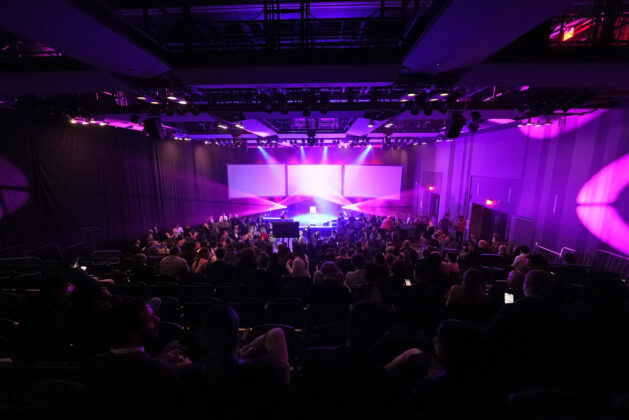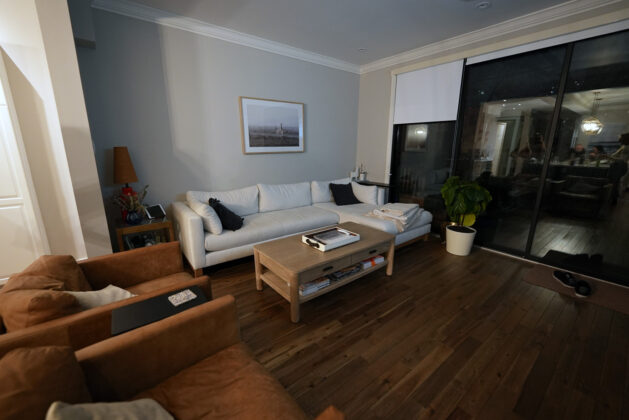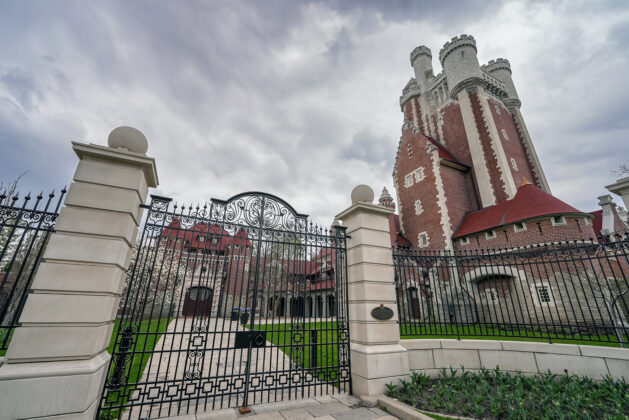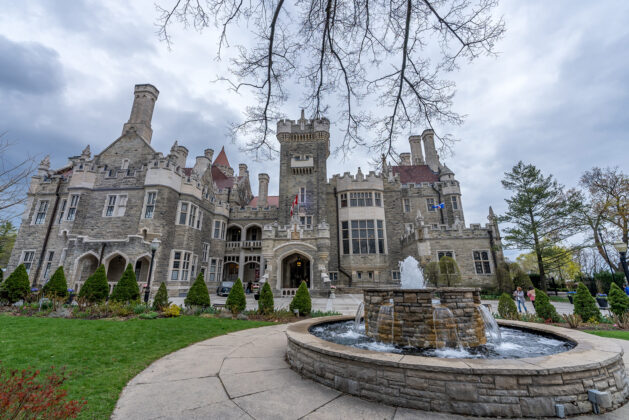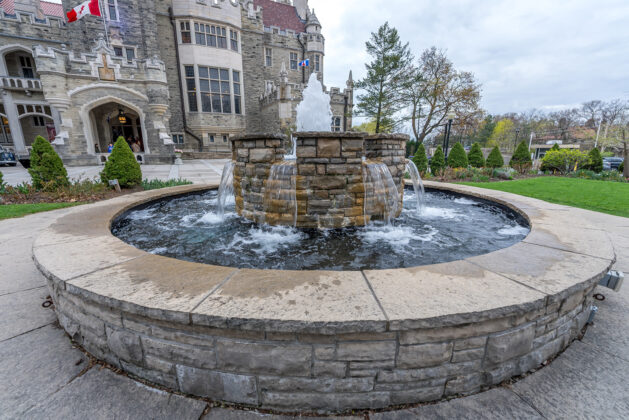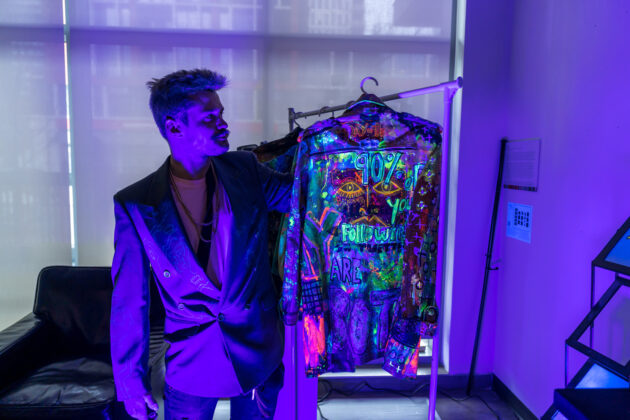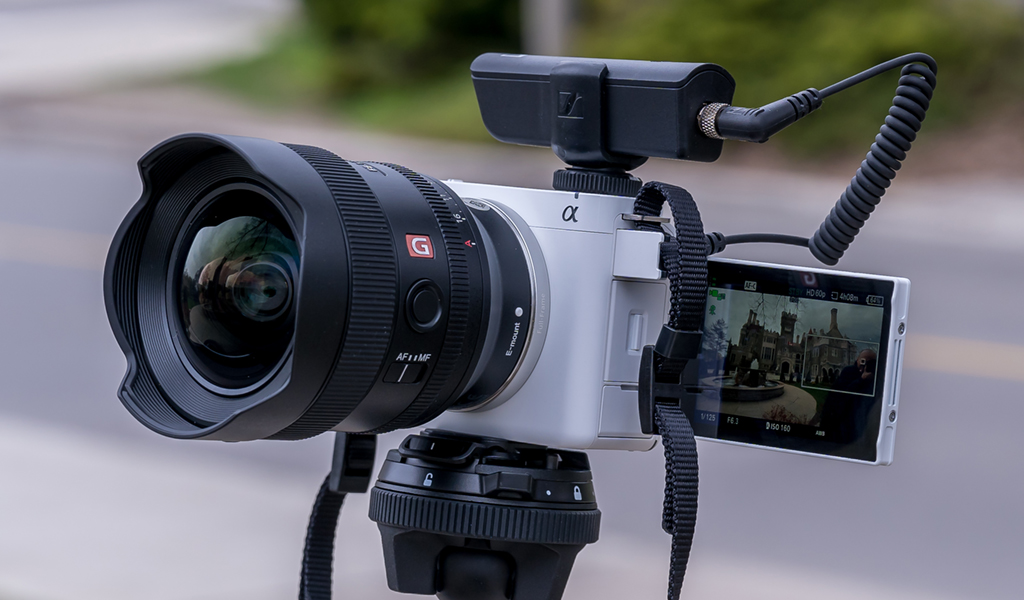
The Sony ZV-E1 is a full-frame mirrorless camera that focuses on video more than on still photos, making it a pretty serious vlogging tool. Part of that has to do with the smaller body, but it’s also because the internal components and support for Sony’s E-mount enable a higher level of versatility for content creation.
Sony pursues this market aggressively as it tries to apply some of its cinematic muscle into cameras that rely less on physical controls, and more on artificial intelligence (AI) to do the job. This mix stands out in a few important ways, not least of which as an alternative to Sony’s existing Alpha cameras. Those generally put video second, whereas the ZV-E1 decidedly puts it first. If you’re looking for a reliable camera for video, this might be worth shooting with.
Design of the Sony ZV-E1 camera
I covered some of the design elements when Sony launched the ZV-E1, but suffice it to say, it’s slimmer and smaller than your average Sony camera. To make that happen, Sony cut out the viewfinder, so you only have the touchscreen to compose photos or video. There are fewer buttons and dials too, putting more of the features and options within the interface.
The obvious ones stand out, like the dedicated video recording button that’s almost as big as the shutter button. A toggle switch between photo, video, and S&Q mode aren’t always necessary when you want to shoot photos or video, but when you set any one of them, the menu changes in the interface to make changes easier for that specific mode.
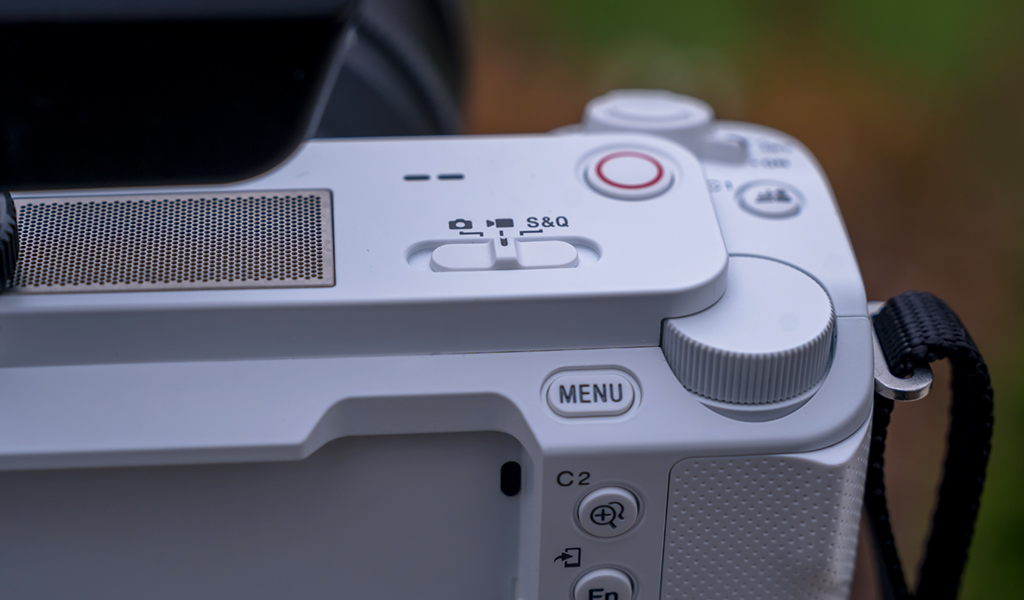
There’s only one memory card slot, which may be a problem if you prefer to, say, shoot video on two cards at once. There are also USB-C and mini-HDMI ports, along with 3.5mm microphone or headphone jacks.
The one dial can adjust shutter speed or aperture, depending on your settings, while the rear buttons are a lot like other Sony cameras. The Fn button is a great shortcut to the most common settings, and the directional pad shortcuts to ISO, exposure compensation, burst, timer, and display info. There’s no joystick for moving the focal point around, so you have to mainly touch to focus instead.
The ZV-E1 uses the same 12-megapixel BSI CMOS sensor found in the A7S III and FX3, the latter of which is a higher-end video-centric camera. In both still photos and video, the ZV-E1 is a step down to something a little more affordable without losing out on the same lenses. I tested this camera out with both the FE 14mm F1.8 G Master and 24-70mm G Master II F2.8 lenses to gauge how much value you get here.
Setup and accessories
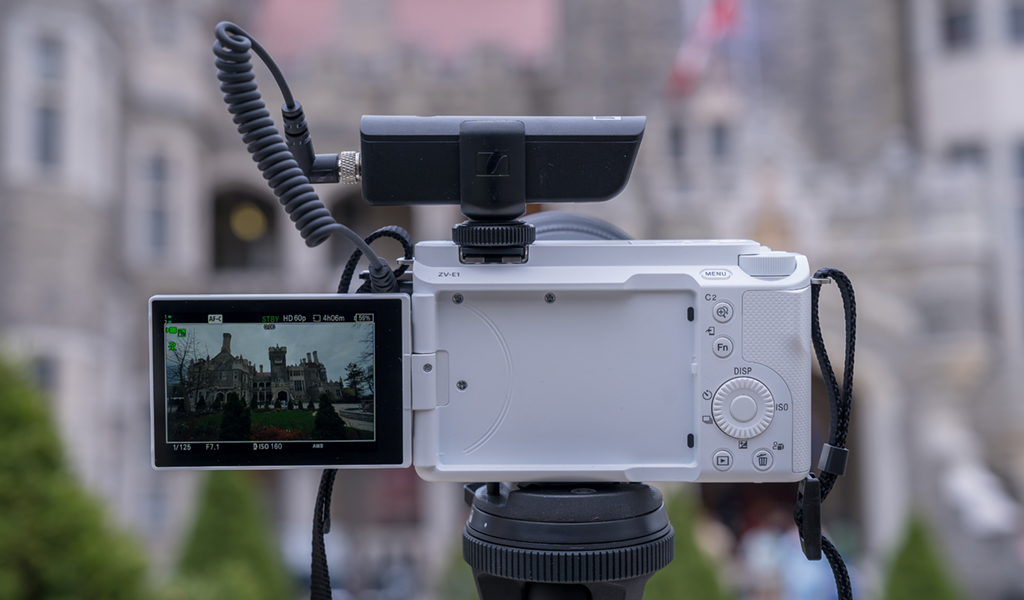
I’m very familiar with Sony cameras, but the ZV-E1 gave me a learning curve I didn’t expect. Sony’s menu system still leaves much to be desired, but you have to go through it to know where the best features are. Some of those relate to the autofocus and tracking features that really make this camera unique compared to others. I’ll get to that further down.
But first, I should note accessories play an integral role in using this, as I’m sure any vlogger would expect. I had a Sennheiser mic system with a receiver on top and transmitter attached to a lavalier mic on myself. I tried the camera with lights on the hot shoe, and mounted it on a tripod. The ZV-E1 supports Sony’s own Multi Interface hot shoe system, which means tighter integration with the company’s own microphones.
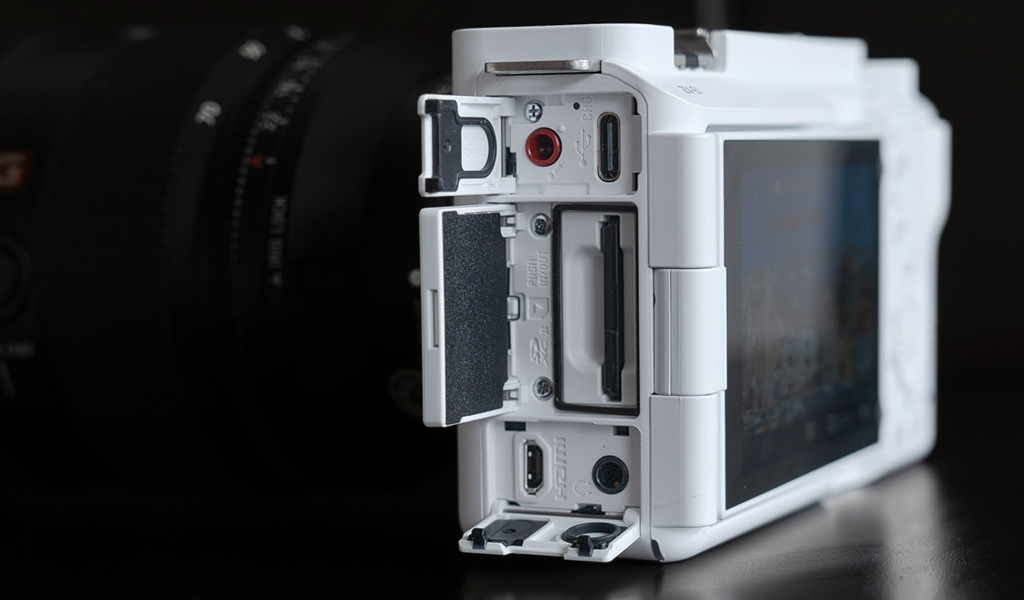
In that respect, the camera feels modular—like you can enhance or build on a foundation with other pieces. Whether that’s using a gimbal to shoot amazing video or adding a vlogging kit of some kind, the opportunities appear plentiful.
Of course, none of that matters if you don’t have a good handle on what the ZV-E1 can do. If you’re familiar with the Sony ZV-E10, then you already have a head start. If not, the camera is more user-friendly than it looks. It’s just best to read through the manual to know where everything is.
Autofocus and automatic framing
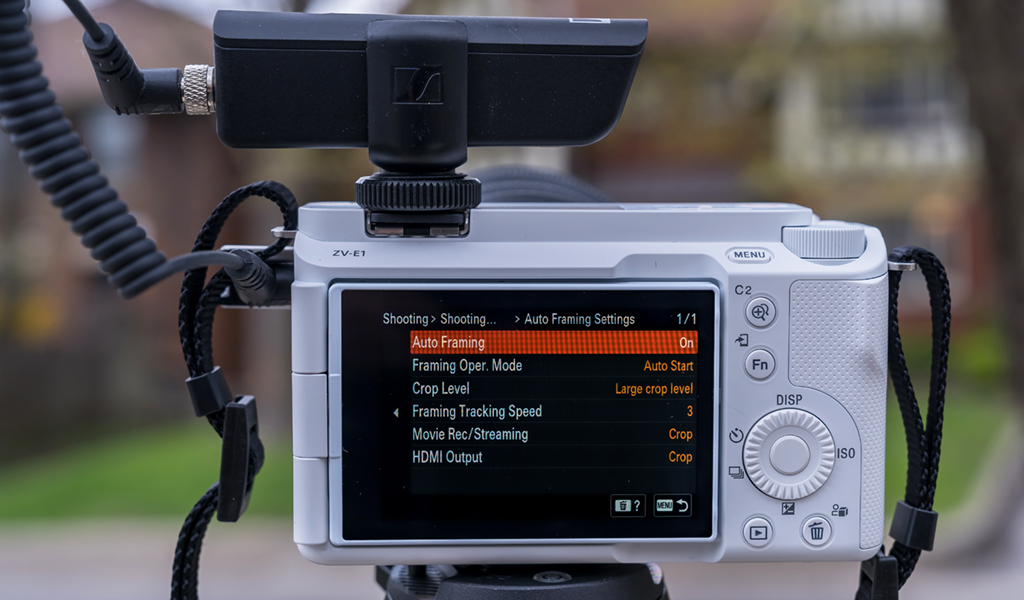
I missed the joystick, so I had to condition myself to set focus by tapping on the screen. You can also access menu items and shortcuts via touch as well, which felt weird for me at first, but is a big part of learning how to navigate the camera.
That also goes for the AI features. Auto Framing is the most prominent because it emulates a moving camera operator without moving the camera. Basically, you can mount the camera on a tripod, where Auto Framing will lock focus onto the moving subject and crop in and out. It’s an impressive feat when you see it, greatly increasing the versatility in how you capture both yourself and others when creating content. Within the menu, you can find it under the video camera menu->Shooting Option->Auto Framing Settings->Auto Framing.
Turn it on and you can also determine how the auto-framing starts, how much it should crop and how fast it should stay on track. However you choose to set these parameters, there’s a lot of room to experiment with the effect. It’s also smart enough to adjust for lighting and background bokeh depending how close or further away you are.
Dynamic stabilization also ramps up AI-powered stable video when shooting while moving. That’s great when you want to keep steady while simultaneously walking and holding the camera. It’s less effective the more you zoom in, and it will crop in from the full frame sensor to add the stabilization. Just bear in mind you have to choose the same resolution for both the raw footage and the resulting crops. For instance, you can plug the ZV-E1 into a laptop and record uncropped footage there, while the memory card records cropped footage. It’s up to you whether it’s in 4K or 1080p HD.
ZV-E1 Video and photo quality
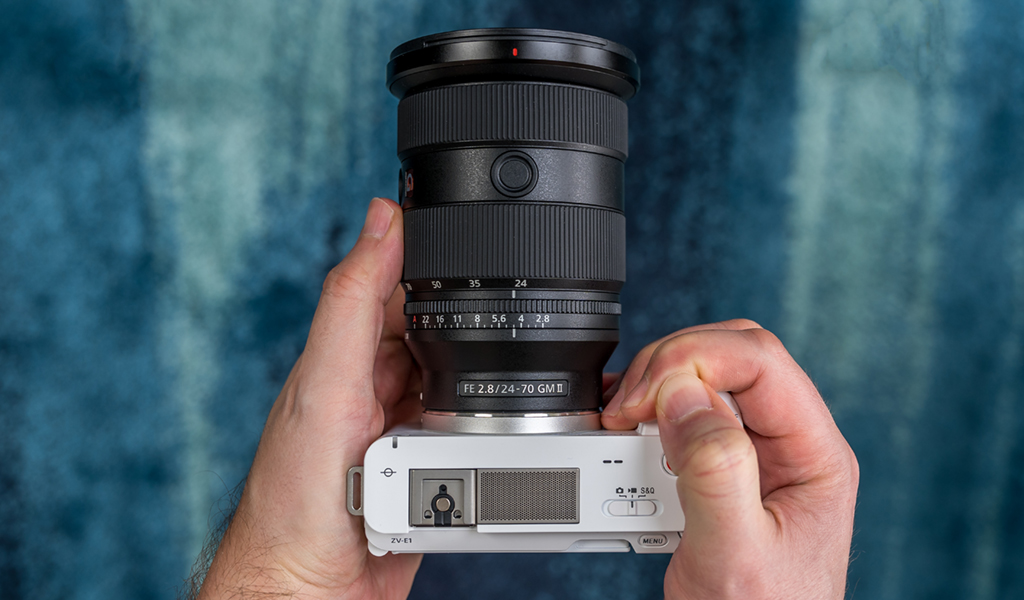
There’s a lot to browse and select as far as video settings go. You can shoot in 4K in either H.264 or H.265, including HEVC compression if you want to make files smaller and know how to edit them later. Frame rates range between 24, 30, and 60fps, with a future firmware update set to bring in 120fps and 240fps (for 1080p).
That said, the ZV-E1 won’t do ProRes or beyond 10-bit colour, so you hit a wall if you want to go up a professional notch. The good news is you can try the S-Cinetone profile for a more professional colour profile, particularly through CineVlog. This mode also goes full Hollywood with a 2.35:1 aspect ratio and 24fps, while adding more cinematic focus transitions to deliver a filmmaker effect.
It’s hard to say what footage will look better than others because Sony feels the ZV-E1 fits in anywhere. I will say Auto Framing struggles more in low-light conditions, leading to more erratic cropping, and is likely to turn out a mess if you try the fastest tracking on a moving subject at night. As immensely impressive as it is, there are limits to the technology.
As for still photos, I took some and found quality to be consistent with a Sony camera in this range. You can shoot in RAW for greater control in post-production. Naturally, you lose out on more resolution given the modest 12-megapixels, but you win on the point-and-shoot feeling the camera provides.
I loved the articulating screen, though found it problematic with the neck strap and cables sticking out of the ports when positioning the camera and screen to face me. Another issue arises if you’re using a larger lens, where the peripheral edges potentially block part of the screen from that angle.
Battery life
Sony rates the ZV-E1 at up to 85 minutes on a single charge, but that depends on a few factors. You can take up the full charge recording in 1080p without worrying about overheating, but that’s not going to happen with 4K. After about 30-40 minutes, the camera will issue a warning and then shut down if it gets too hot.
You can always plug in via USB-C while shooting to keep the battery charged, except it won’t mitigate any of the heat issues. This is all less of an issue for still photos but if you’re looking at a mix of stills and video, you should get through most days without issue. If you’re looking to load up on video content, it’s a good idea to get a second backup battery.
Final thoughts
I had the Sony ZV-E1 for roughly a week, which wasn’t enough time to fully dive into all the features available. Nor the shooting scenarios the camera makes possible, for that matter. Despite that, I got a very good feel for what it does and who it’s for. The video-centric focus isn’t just obvious from the specs, it’s crystal clear once you start shooting with it.
For vloggers and content creators looking to upgrade into something both portable and formidable, the ZV-E1 has the goods to deliver. You would do this knowing that still photos come second in the grander scheme, and that you will need to spend more to accessorize and expand on the camera, if you haven’t got all that gear already. If it’s too much for what you need, the Sony ZV-E10 is a more affordable alternative, though it’s not a full-frame shooter.
The Sony ZV-E1 is available now in body-only in black or white, or bundled with a 28-60mm kit lens.

